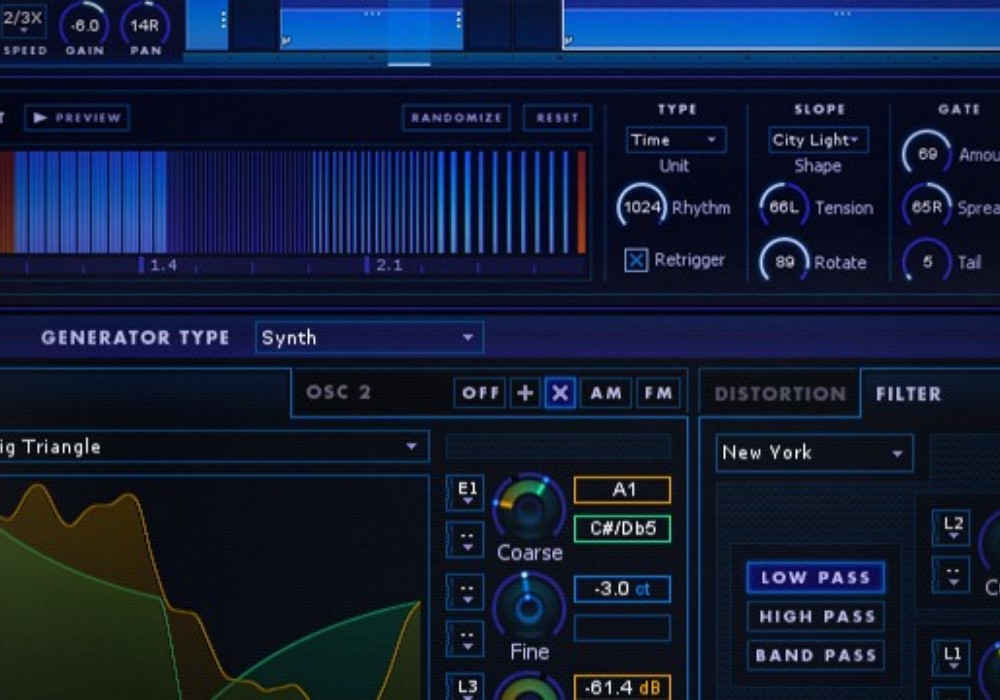Hard drive and Compact Flash-based MP3 players have revolutionized portable music playback. No longer is it necessary to carry around stacks of CD's to enjoy a huge selection of music on-the-go. However, progress hasn't been quite as swift for portable music recording. The iPod doesn't record at all without a third-party accessory, while those MP3 players that do only provide limited functionality; meanwhile, MiniDiscs have just recently been freed from the obnoxious requirement of transferring content recorded by the MD to a computer in real-time. "But," you're thinking, "What does this have to do with me, a typical Tape Op reader?" Enter the MicroTrack 24/96. A dedicated portable recorder that's just a little bigger than an iPod, it's a big step forward in terms of functionality. And yet the clean user interface and the word "recorder" hide much of the utility; it's an incredibly useful device that's more than just a simple recorder.
The unit sports three different types of inputs: balanced 1/4'' TRS mic/line with 30 V switchable phantom power (more on this later); 1/8'' TRS with 5 V power; and an S/PDIF digital RCA. 1/8'' headphone and stereo RCA analog outputs are provided, and a USB port allows drag-and-drop file transfers with Macs and PC's (no special software or drivers needed). The fixed internal battery is rechargeable using the included power adaptor, and phantom power is available while running on battery. The audio is digitally encoded as either WAV (16 or 24- bit, up to 96 kHz) or MP3 (96-320 kbps), with storage handled by a removable CompactFlash card or Microdrive.
The included 1/8'' stereo microphone and 64 MB CompactFlash card made it useful immediately out of the box, and that's what I tried first. Recordings of both voice and music were clear, though a little noisier than I expected. Recording levels can be adjusted while recording, a feature some MiniDisc recorders lack.
Unfortunately, the small flash card proved limiting right off the bat; 64 MB translates to only 6 minutes at 16-bit, 44.1 kHz uncompressed. MP3 recording time is much better-60+ minutes at 128 kbps-but for quality digital audio, 16-bit or better WAV is necessary. Of course, there're economies of scale at work; Apple sells gajillions of iPods, so they get a really good deal on storage and can afford to put 20 GB drives in them. Even still, for $400 street, I'd expect more storage included with this unit.
Next, I was eager to try a studio condenser mic and really give it a workout. As I mentioned before, the MicroTrack only provides 30 V phantom power. While many mics should be Okay with this, M-Audio provides a list of mics on their website that are advertised to work with lower voltages, as they claim that in rare instances, mics can be damaged by underpowering. Keeping this in mind, I tested it with the venerable Shure SM81 and compared the sound of the M-Audio unit to a Soundcraft Spirit 328 digital mixer. With both voice and music, the M-Audio performed well, with only some harshness in the high end. Otherwise, the sound was solid, and the lower phantom voltage didn't have much effect.
Even after the music was recorded, the MicroTrack shone. Transferring files using both WinXP and OS X was dead-easy, as the device looks just like a removable hard drive to a computer. This really opens up lots of possibilities. With a large flash card, it's ideal for carrying mixes around with you, as you can copy files both to and from it. The RCA outputs make it easy to plug it into any stereo system to listen to your mixes, and anyone with a media reader can transfer your files from CompactFlash to a PC. Not to mention using it to record rehearsals, live performances, interviews, fresh sounds to incorporate into your mixes ... the list goes on. Heck, you can even use it as an MP3 player if you want, even though playback functionality is pretty limited.
Some final notes. I hit around 4 hours of battery life recording constantly using the 1/8'' input. Recording with two condenser mics will provide less time. I did experience issues with the firmware. There are new releases with important fixes and new capabilities (see the changelog posted on M-Audio's website), but as of mid-December, the most recent two were marked beta. And they deserve that status. I loaded v1.2.0, and once when I was disconnecting the Microtrack from my computer, it locked up and corrupted the flash card bad enough to require formatting in a digital camera before I could use it again. It also seemed to introduce a few other small issues as well. Despite all the fixes, I'd suggest staying with the original firmware until there is a new stable release, which I hope M-Audio provides soon.
My testing confirmed my initial impressions that the Microtrack is an important step forward in the world of budget-priced portable recording, and it also has uses beyond just field recording. For recording purposes, it blows MiniDisc devices away; I could never stand their torturous user interfaces or absurd file transfer restrictions. And even compared to other flash recording devices such as the Marantz PMD660 and the Edirol R-1, this unit looks good, providing more encoding options at a slightly lower price than its competitors. Musicians, recording engineers, and field recorders take note: there's something to like here for all of you!
($499.95 MSRP; www.m-audio.com)





_disp_horizontal_bw.jpg)